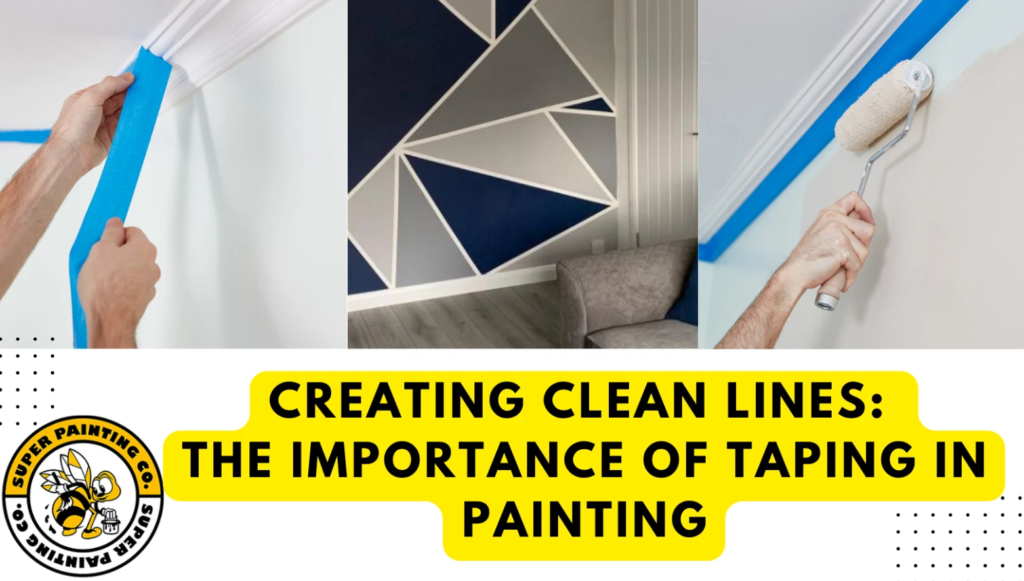Painting a room can be a fun and rewarding home improvement project, but it also requires careful preparation to achieve a clean and professional finish. One common question often arises during the painting process is whether or not you need to tape before painting. The answer depends on various factors, including your skill level, the type of project, and the desired outcome.
Taping in Painting Perfection: When and How to Use Painter’s Tape?
Taping before painting primarily involves the use of painter’s tape, which is a low-adhesive tape designed for masking off areas that you don’t want to paint. Here are some key factors to consider when deciding whether or not to use painter’s tape.
Skill Level
The first consideration is your level of experience and skill when it comes to painting. If you’re a beginner, using painter’s tape can be a helpful tool to ensure clean and crisp lines. It can help you maintain straight edges along trim, ceilings, and corners, even if your hand isn’t perfectly steady.
Experienced painters, on the other hand, may have the confidence and precision to cut in without tape, using only a high-quality brush.
Type of Project
The type of painting project you’re undertaking also plays a role in whether or not you should tape.
For smaller projects, such as painting a single wall or a small piece of furniture, taping may not be necessary. However, for larger and more complex projects like painting an entire room, taping can save time and help maintain consistency in the finished look.
Surface Conditions
Consider the condition of the surfaces you’ll be painting. If you’re painting over uneven textures or damaged areas, using tape can help create clean lines and prevent paint from bleeding into unwanted areas.
Additionally, if there are gaps between surfaces like baseboards and walls, tape can help bridge those gaps for a neater finish.
Desired Finish
Your aesthetic preferences also play a significant role in the decision to tape before painting. If you’re aiming for a perfectly sharp and clean finish, using painter’s tape is advisable. It allows you to create crisp lines and boundaries between different colors or sections of a room.
On the other hand, if you prefer a more rustic or distressed look, you may choose to skip the tape for a less precise, hand-painted appearance.
Time and Patience
Taping before painting can be a time-consuming process, especially for large projects with intricate details. It requires patience and attention to detail. If you’re working on a tight schedule or simply want to complete the project quickly, you may decide to skip taping and rely on your painting skills instead.
The decision to tape before painting ultimately depends on your individual circumstances and preferences. Painter tape can be a valuable tool for achieving clean and professional results, especially for inexperienced painters and larger projects. However, experienced painters may choose to skip taping in favor of a more hands-on approach.
Regardless of whether you decide to use painter’s tape or not, it’s essential to prepare your surfaces properly before painting. This includes cleaning, patching any imperfections, and using the right type of paint and brushes for the job. With careful planning and attention to detail, you can achieve a beautiful and long-lasting paint finish that enhances the beauty of your home.
Ready to transform your space with a professional and flawless paint job?
Opt for Super Painting Contractors for your upcoming project and discover the remarkable impact of our expertise and unwavering commitment to quality. Reach out to us today at 310-381-9027 to schedule a complimentary consultation and receive a detailed estimate. Let’s collaborate to breathe life into your vision and elevate the appearance of your home or business with our exceptional painting services.
Your satisfaction is our guarantee, so don’t wait –get in touch with Super Painting Contractors now to schedule your next painting project!
Meta description: Taping in painting gives a professional finish to any painting project. Here’s how to use painter’s tape for perfection.






I do consider all the ideas you have offered in your post. They are very convincing and can definitely work. Still, the posts are very short for beginners. May you please lengthen them a bit from subsequent time? Thank you for the post.